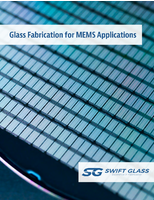AVT Cameras Help Locate Air France Crash Wreckage
REMUS 6000 unmanned submarines discover location of the aircraft at 3,900 m depth in Atlantic ocean and transmit images with AVT Pike digital cameras.
Nearly two years after the dramatic crash of Air France flight 447 between Rio de Janeiro and Paris, France's air accident investigators finally discovered the wreckage of the Airbus A330-200 aircraft 600 miles off the Brazilian coast on the floor of the Atlantic ocean at 3,900 m (12,800 ft) below sea level.
Mysterious Crash
Flight 447 went down on June 1, 2009 after taking off from Rio de Janeiro, Brazil to Paris, France when flying through a severe thunderstorm. All 228 passengers and crew members died in the crash. The actual cause of the accident has not yet been identified with certainty. Only some pieces of the aircraft were found drifting on the ocean surface while the main parts of the aircraft and the precious flight recorders sunk to the sea floor and have not been located yet despite three search campaigns in the two years following the accident.
Unmanned Submarines Explore Sea Ground
The fourth campaign started on March 22, 2011 under the supervision of the Woods Hole Oceanographic Institution (WHOI) in Massachusetts on behalf of the the BEA (Bureau d'Enquête et d'Analyse), France's air crash investigation authority.
Three REMUS 6000 autonomous underwater vehicles (AUVs) were used to search the sea floor for the wreckage. The REMUS 6000 is an advanced underwater drone manufactured by Hydroid Inc. for deep water exploration, where depth and pressure are too high for human divers. The REMUS 6000 AUV was designed under a cooperative program involving the Naval Oceanographic Office (NAVOCEANO), the Office of Naval Research (ONR) and the Woods Hole Oceanographic Institution (WHOI) in support of deep water operations. The REMUS 6000 AUV can dive up to 6,000 meters deep (19,700 ft) and operate autonomously for up to 22 hours. It can be used for environmental monitoring missions, scientific sampling and mapping or search and salvage operations, as in the case of Air France flight 447.
The autonomous submarines searched the sea floor with sonar detectors for the wreckage and finally found it at nearly 4,000 m depth. Using their on-board Pike F-421B digital cameras from Allied Vision Technologies, they could transmit first images of the aircraft to investigators. The Pike F-421 is a high-end FireWire camera for industrial and scientific imaging are fitted with a Kodak monochrome CCD-sensor delivering high-quality, low-noise images for demanding applications.
Elucidating the AF447 Case
The discovery is a major step to elucidate the causes of the Air France crash. Now that the wreckage has been located, officials are confident that the flight recorders can be recovered along with the aircraft and that they could give indications on what happened on June 1, 2009. Analyzing the causes is vital to both Air France and Airbus to prevent such a catastrophe to happen again, but knowing the truth is also essential for the many relatives of the victims who have been waiting so long to learn what happened to their loved ones.
The BEA announced on April 8, 2011 that phase 5 of the investigation will involve recovering all parts of the aircraft and hopefully the flight recorders. This mission will be undertaken by another ship, the Ile de Sein and directed by the BEA itself.
Jean-Philippe Roman
PR-Manager
Allied Vision Technologies GmbH
Niederlassung Ahrensburg
Klaus-Groth-Str. 1
22926 Ahrensburg
Germany
Tel. +49 4102 / 6688-196
Fax +49 4102 / 6688-10
Mob. +49 170 / 796-4158
jean-philippe.roman@alliedvisiontec.com
http://www.alliedvisiontec.com
Laurette Perrard
Marketing Communications Americas
Allied Vision Technologies Canada Inc.
101 - 3750 North Fraser Way
Burnaby, B.C. V5J 5E9
Canada
Tel: +1 604-875-8855 x123
Fax: +1 604-875-8856
laurette.perrard@alliedvisiontec.com




